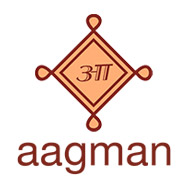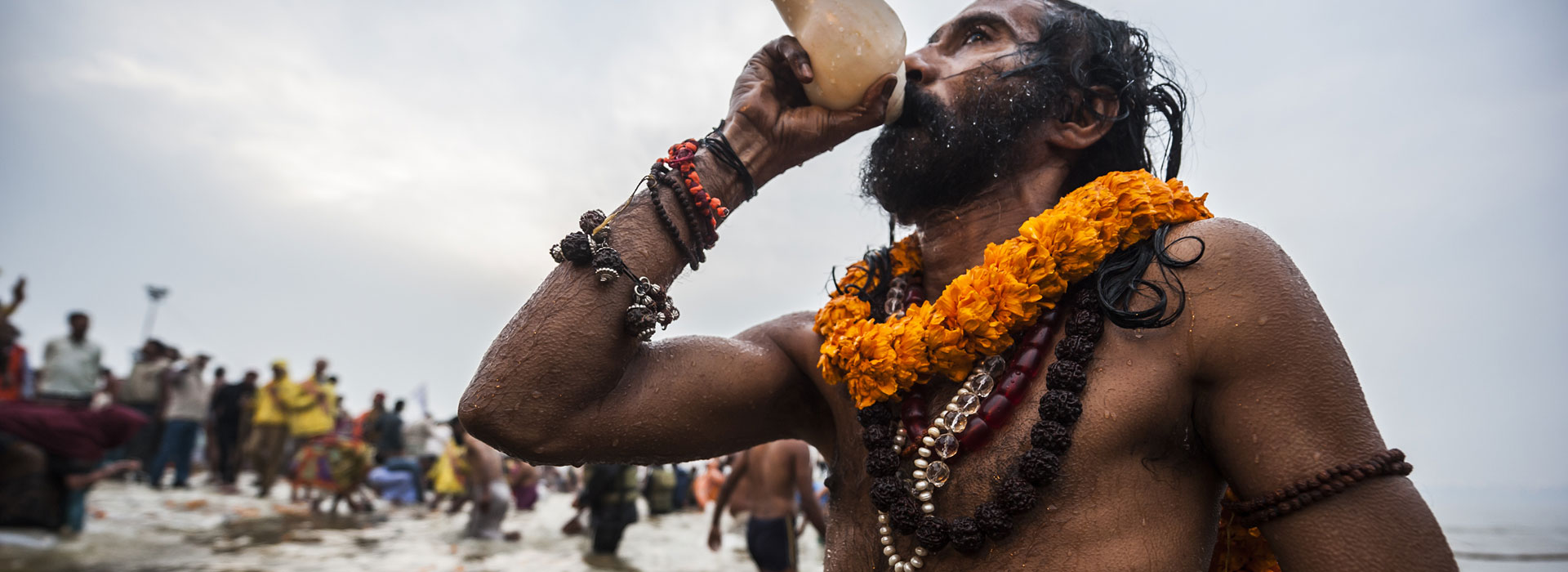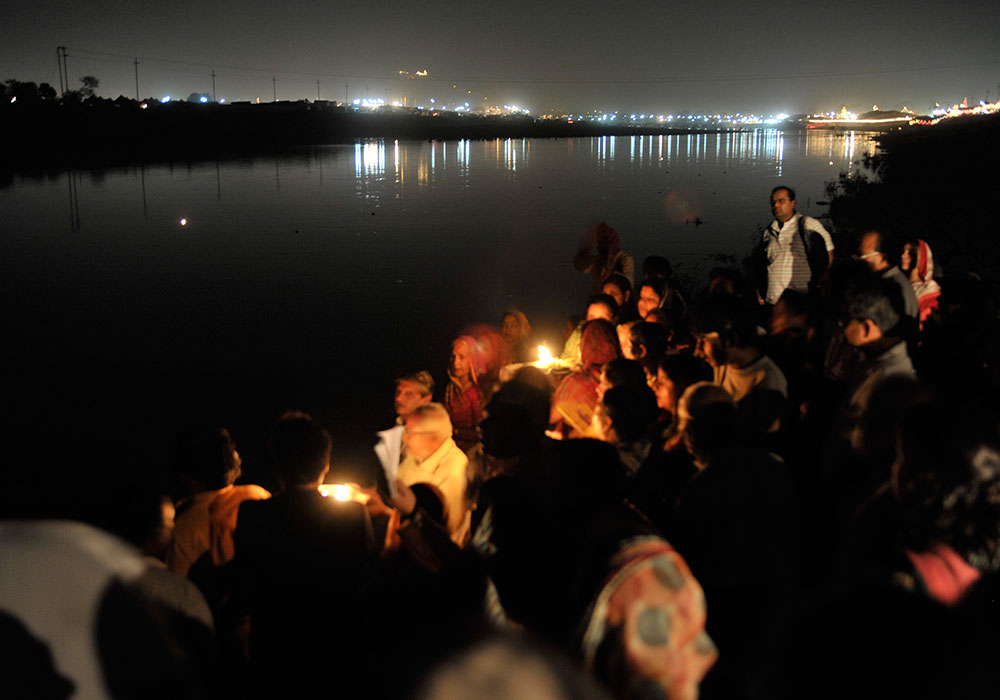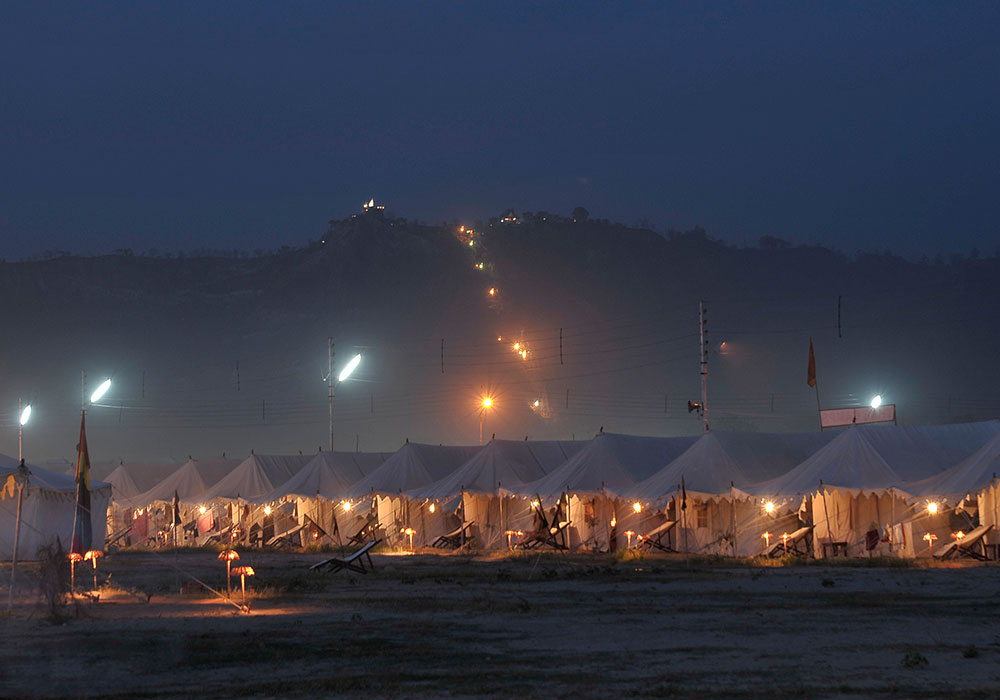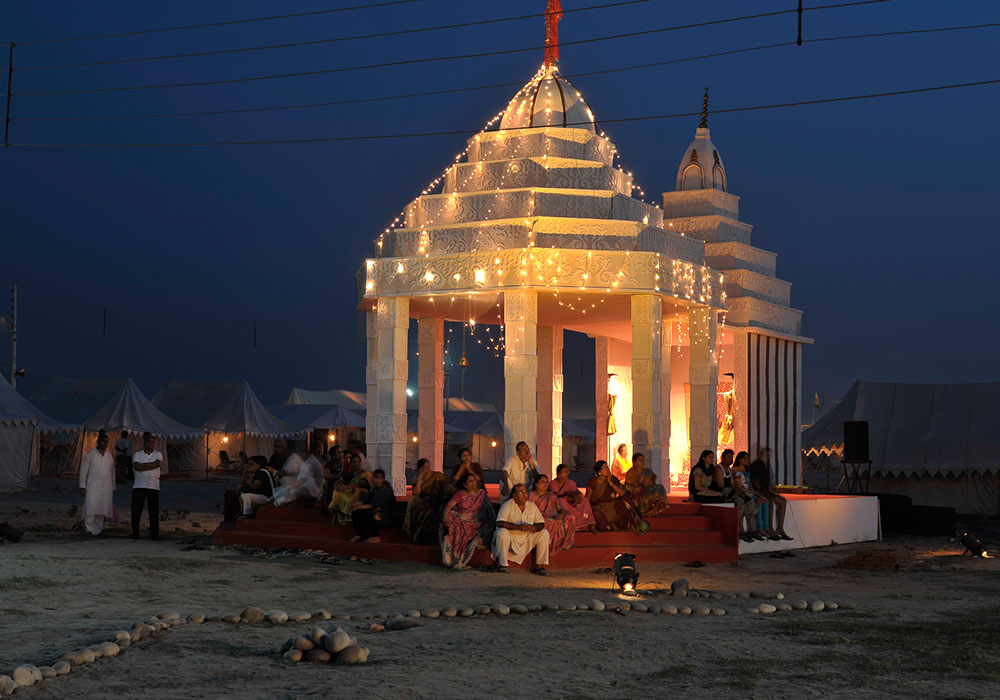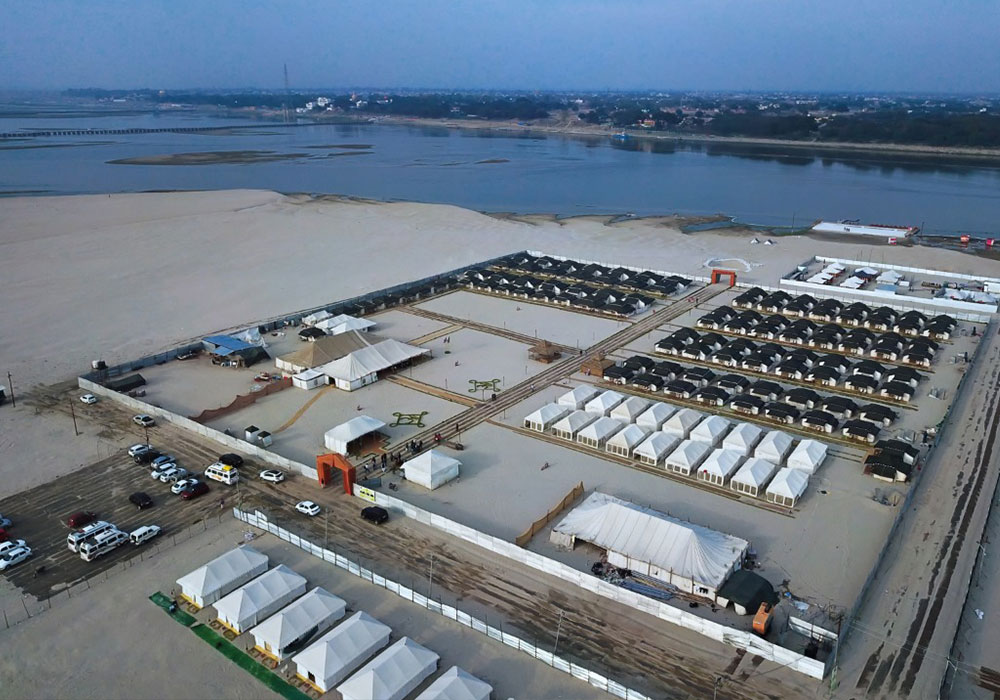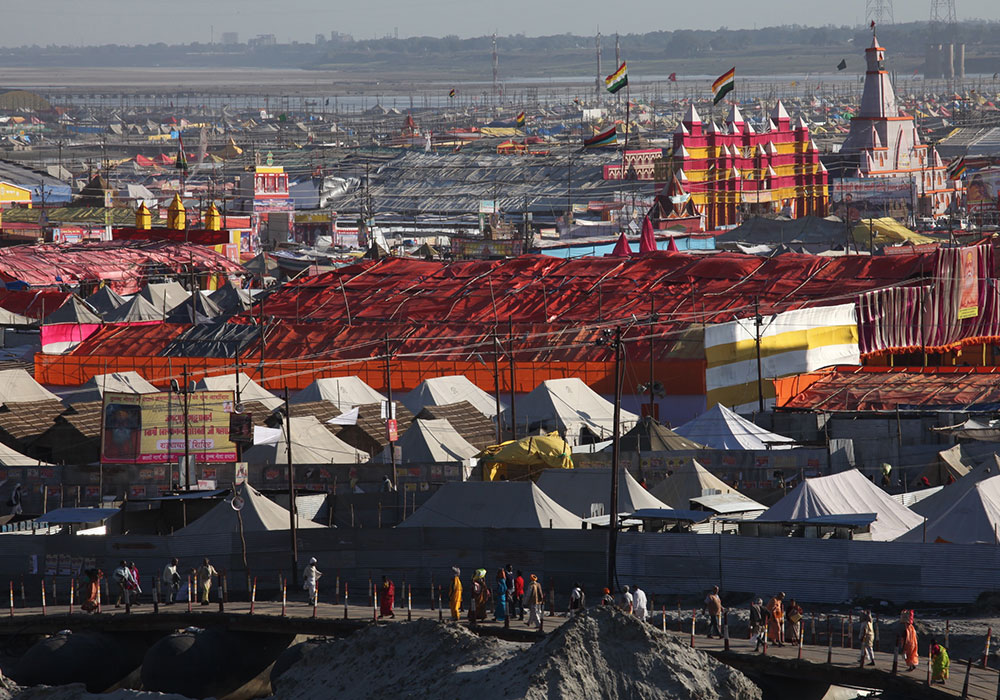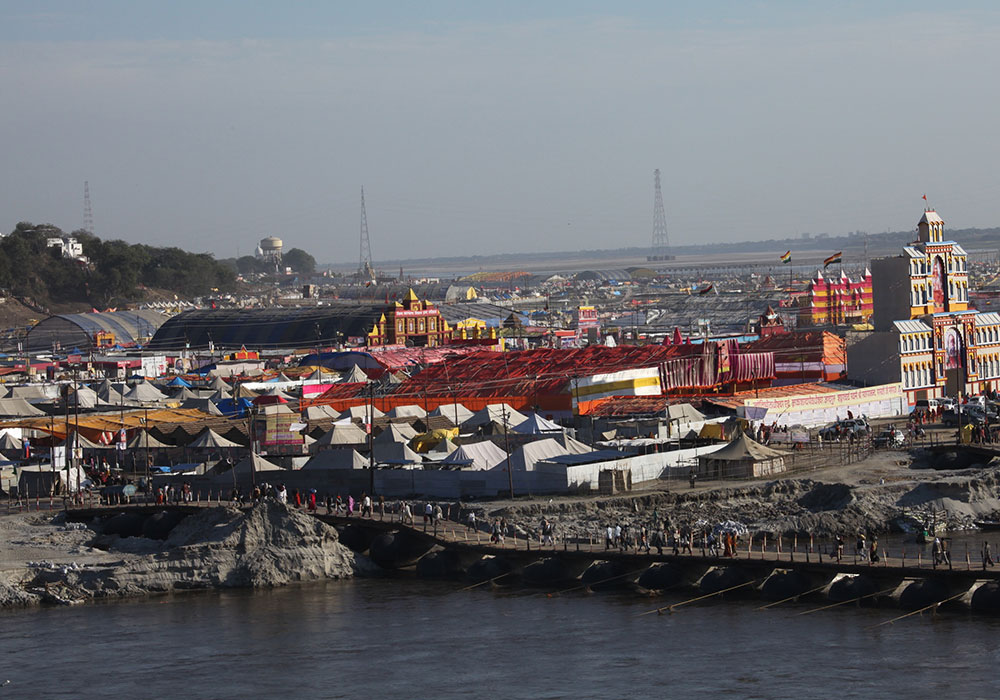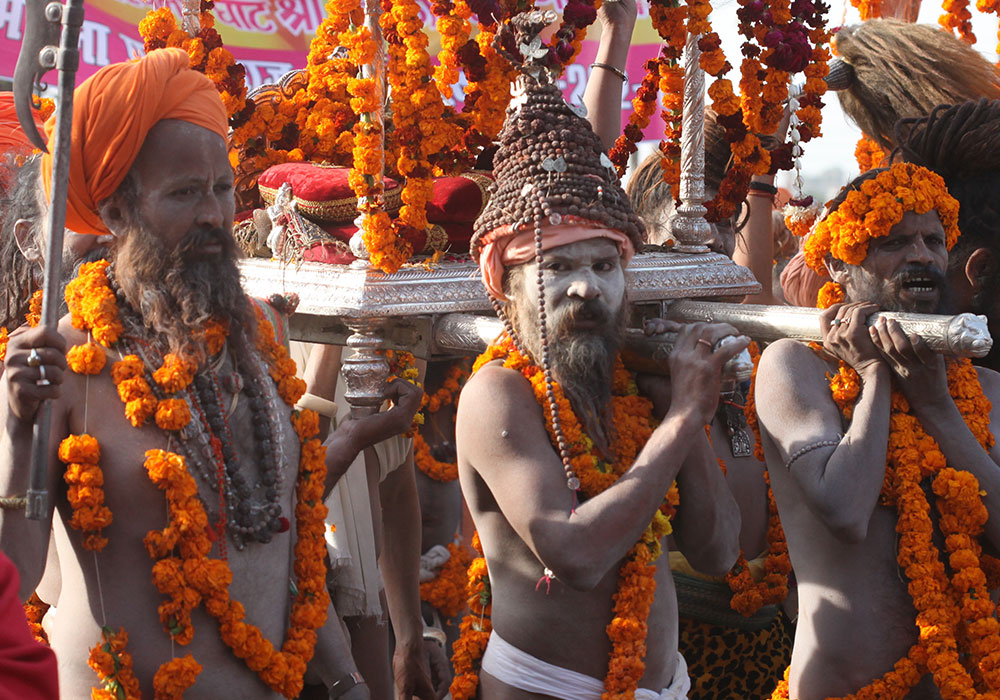One of the most popular and amazing mythological stories found in ancient Indian texts is Amrita Manthan, that is, churning of the ocean for nectar, the celestial water of immortality.
As the story goes, once the gods and demons agreed to churn the great ocean and share the treasures or the 'ratnas' that will emerge from it. There were long arguments how this can be accomplished and how the booty will be distributed. The most precious treasure was amrita, the nectar. Both the gods and the demons laid claims to it. One who drinks will become immortal and therefore, all-powerful and indestructible. Gods could never accept this.
The legend goes thus- the gods and the demons fight for a pot of nectar (Amrit Kumbh): the nectar of immortality. Lord Vishnu, disguising himself as an enchantress (Mohini), seized the nectar from the demons. While fleeing from the evil ones, Lord Vishnu passed the nectar on to his winged mount, Garuda. The demons finally caught up with Garuda and in the ensuing struggle, a few drops of the precious nectar fell on Allahabad, Nasik, Haridwar and Ujjain. Since then, the Kumbh Mela has been held in all these places, alternatively, every 12 years.
Finally, the churning began with a mountain peak, used as the churning rod and the great serpent volunteering to become the rope to be used for turning it. There was a dispute over which side - the head or the tail - of the serpent would be held by who, the gods or demons. Finally the churning began.
Among other things - the celestial horse, the elephant, the divine cow etc. - was the deadliest of poisons called 'Halaahal'. Its appearance could kill all life. Shiva, the supreme god, offered to swallow it to save the creation.
Each thing or animal - even the four Vedas - as it emerged was presented to different gods. Their eyes were on the pot of nectar. As soon as it came out of the water, the demons tricked the gods to partake of it. But the demon Rahu who took it first was instantly beheaded. In spite of it the head remained alive. According to a belief, whenever Rahu swallows the sun there is solar eclipse.
During the chase for the pot of nectar between gods and demons, it was kept on the ground a number of times. Those spots became holy and later venue for holding the Kumbh mela (fair). These holy places are Allahabad (Prayag) in Uttar Pradesh, Haridwar (Uttrakhand), Ujjain (MP) and Nasik (Maharashtra).
